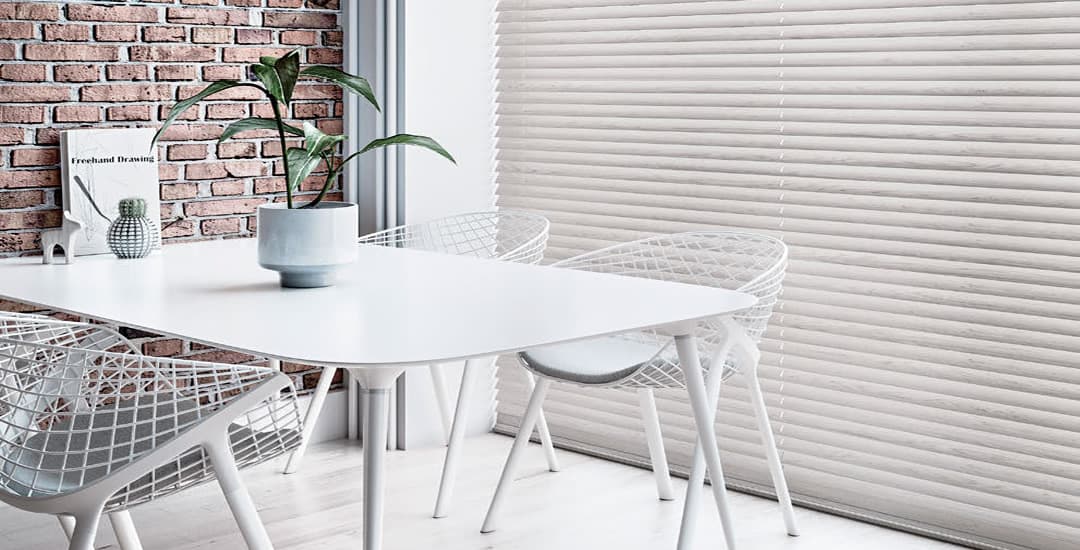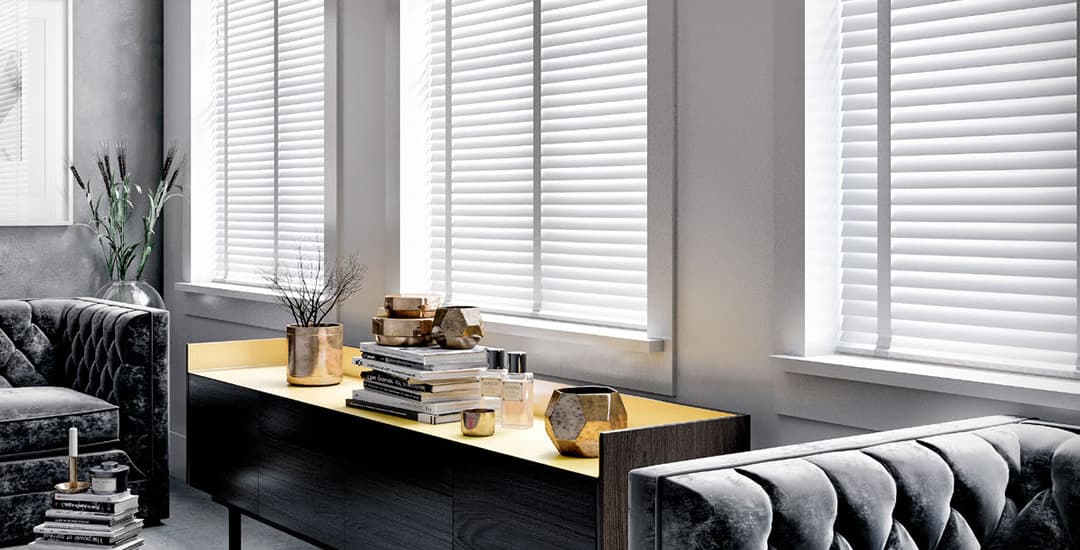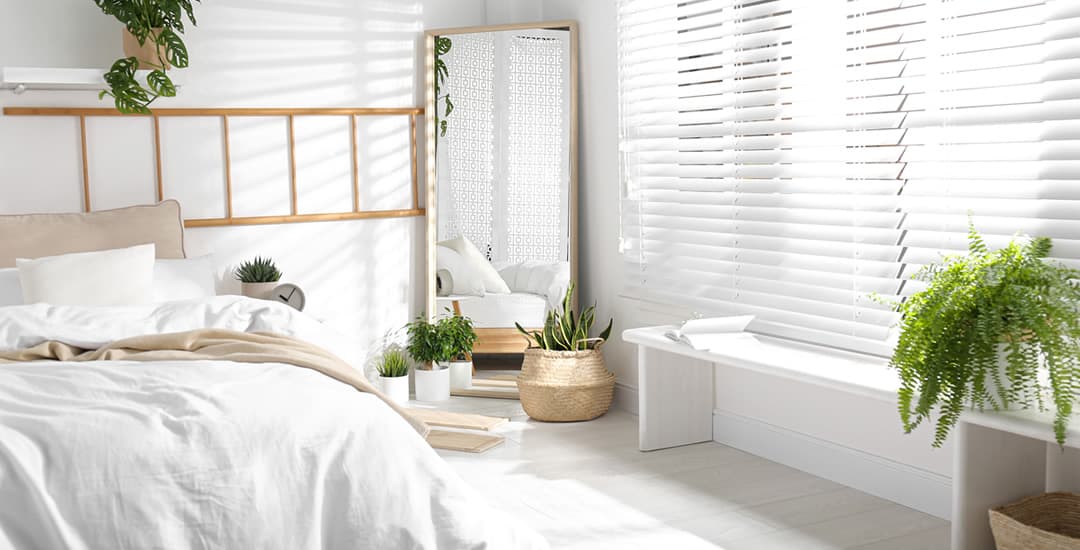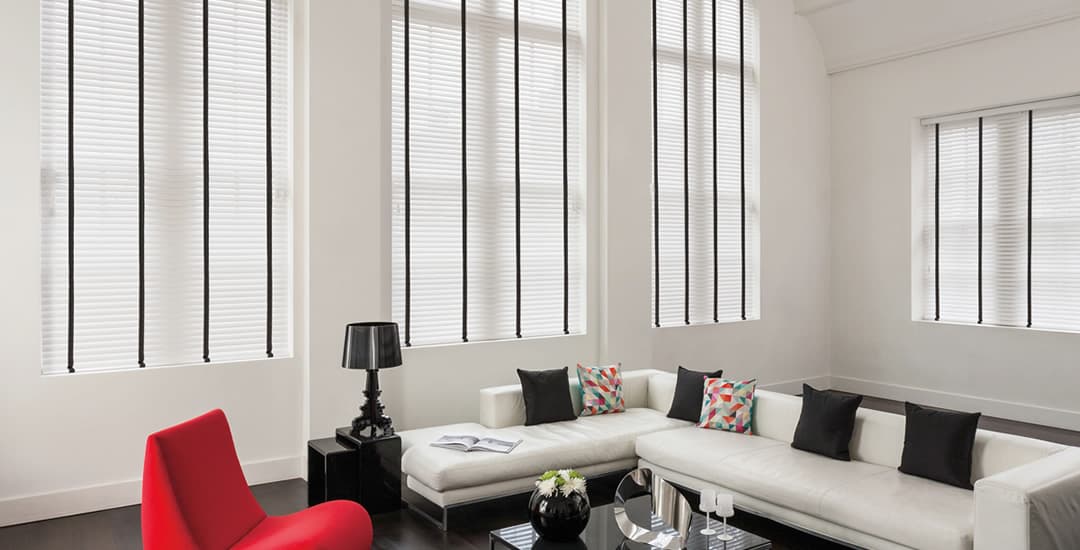
Yes, if you’re talking about a window that is very wide, tall, or both, and for this reason you’ll tend to find that the maximum size they’re available in will be a shade smaller than most alternative types of blinds.
That said, a window would have to be quite large before a faux-wood blind became unviable for it due to its weight; and for an average window in the average home, you’re unlikely to have an issue.
Faux-wood blinds aren’t always a good choice for bifold doors and patio doors, for instance, due to both the weight they would need to be and the depth of the stack of slats that they would form when opened.
If you’re considering getting a set and want to know the maximum size you can buy faux-wood blinds in before they might become a problem, this blog post will tell you everything you need to know.
Are faux-wood blinds heavy compared to other types of blinds?

Yes, faux-wood blinds are probably the heaviest type of blinds overall. They’re far heavier than roller blinds, day and night blinds, and vertical blinds; noticably heavier like-for-like than Venetian blinds, and somewhat heavier than both wooden blinds and good quality Roman blinds, these latter two offerings probably being the closest thing to them in weight, but still tipping the scales on the lower side.
Why are faux-wood blinds too heavy for large windows?

Faux-wood blinds are made of thick, rigid PVC, which makes them very hardwearing; but also heavy in larger sizes.
There are several issues that may come into play if you’re looking at faux-wood blinds in very large sizes and are wondering what sort of problems the weight of them is apt to cause.
A blind that is very heavy will first of all be difficult if not impossible to actually manufacture, and very costly or potentially impossible to ship. The largest realistically possible faux-wood blinds tend to need two people to handle and hang them safely and effectively, but with outsized faux-wood blinds, they might simply be too heavy for safe handling and hanging at home.
There’s even the potential issue of the structural integrity of the wall you hang the blind on; you might not be able to secure the blind to it effectively, and even if you can then it might literally be too heavy for some types of wall to support.
Also, even if you did somehow manage to buy and hang a very large faux-wood blind successfully, the weight of it would make it very heavy in operation, meaning that the average person would struggle to open and close it and might not even be able to manage to do so at all.
Another point to bear in mind is that as mentioned, a blind that is very long/tall will form a deep stack of slats at the top when open. This may mean that it comes down over the glass to an extent too, plus that for a French door or patio or bifold door, you might actually need to duck to get under it, albeit this isn’t strictly a weight-related issue!
How wide is too wide for faux-wood blinds, and what is the maximum size you can buy them in?

So, how wide is too wide, and what is the largest size a faux-wood blind can realistically be made in?
We’ve done quite a lot of experimentation with this since we began fabricating and selling our first faux-wood blinds over a decade ago, and the maximum width we offer is 2600mm or 260cm/2.6m wide, with a drop of up to 3000mm/300cm/3 metres.
A blind in these dimensions is the top end of what is sensible, safe, and comfortably operable for a faux wood blind, but above this and you’re highly likely to run into problems of some sort.
Do faux-wood blinds sag in larger sizes?

Not if they’re well made and hung correctly, no. Good quality made-to-measure faux-wood blinds won’t sag, because they’re designed and manufactured properly, with the appropriate number of brackets/supports provided to ensure that the blind is held safely in place and properly and evenly supported along its width.
However, if you buy cheap/poor quality faux-wood blinds, all bets are off. Faux-wood blind sagging is almost exclusively an issue with readymade faux-wood blinds, which are far less sturdy and hardwearing, and which might not have the structural integrity or appropriate number of support brackets required to keep them from bowing or sagging over time under the force of their own weight.
This is largely because readymade faux-wood blinds are deliberately made of thinner, lighter materials than the ideal, because they’re designed to give buyers the option to cut them to size at home, which is likely to be pretty challenging if the blind is made to last for the longer term!
They’re also very much made down to a price and not up to a standard, and are designed for a useful lifespan of just a couple of years as a rule, all of which contribute to them being potentially likely to start to sag or bow over time.




